Cell Projects
The impetus for each project appears on their individual project page
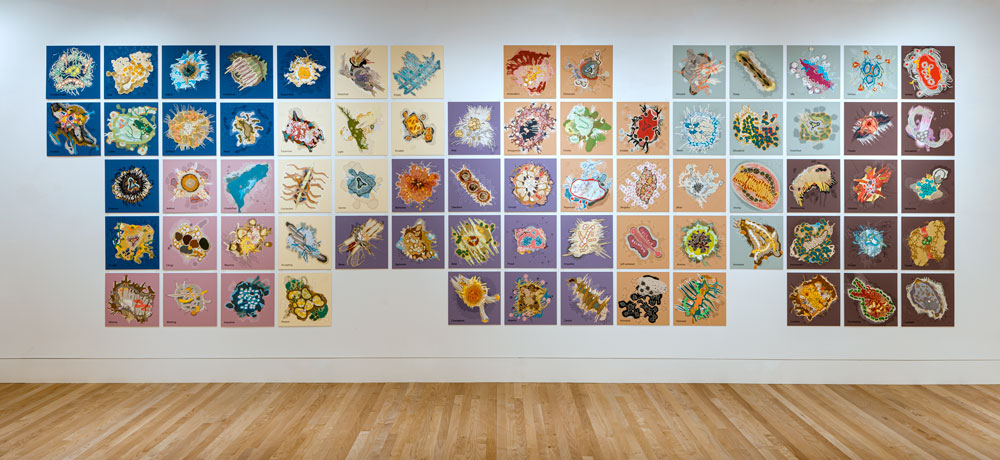
Kent Manske and Nanette Wylde
Variable print collage installation
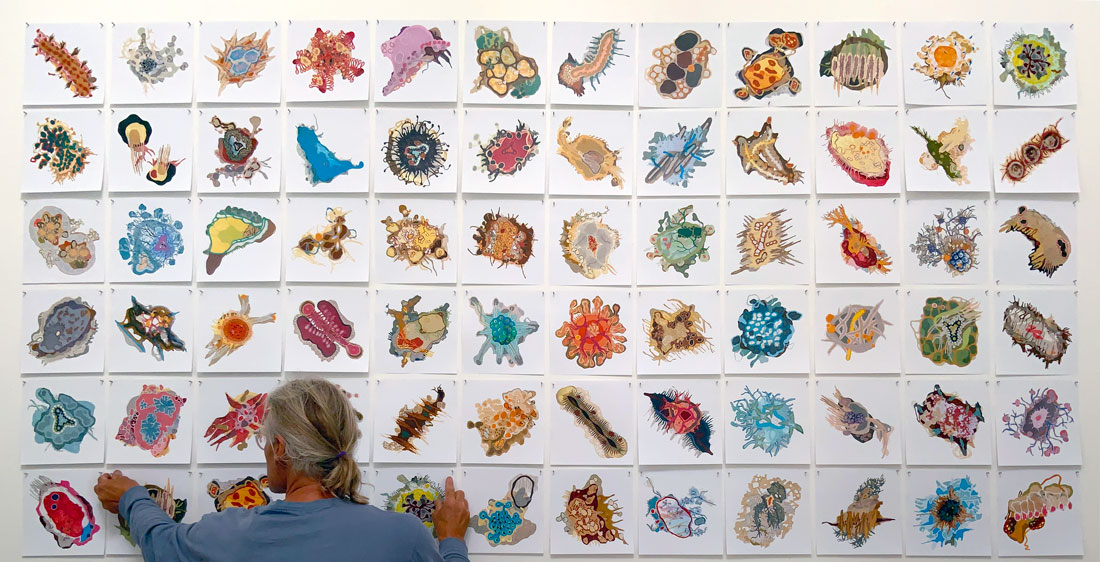
Digital archive of over 200 life forms created between 2018 to 2025
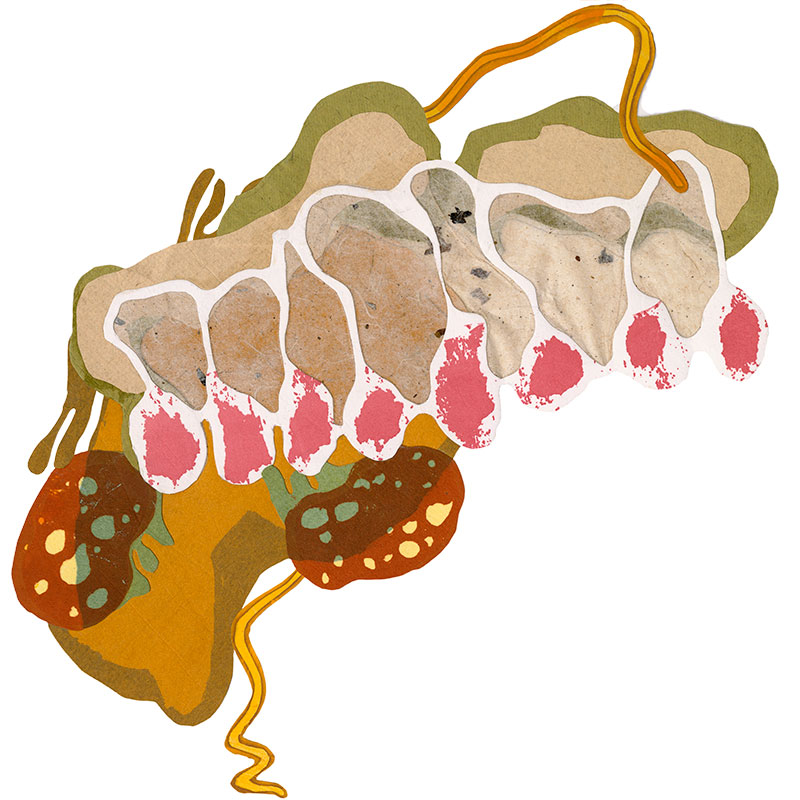
104 print collages
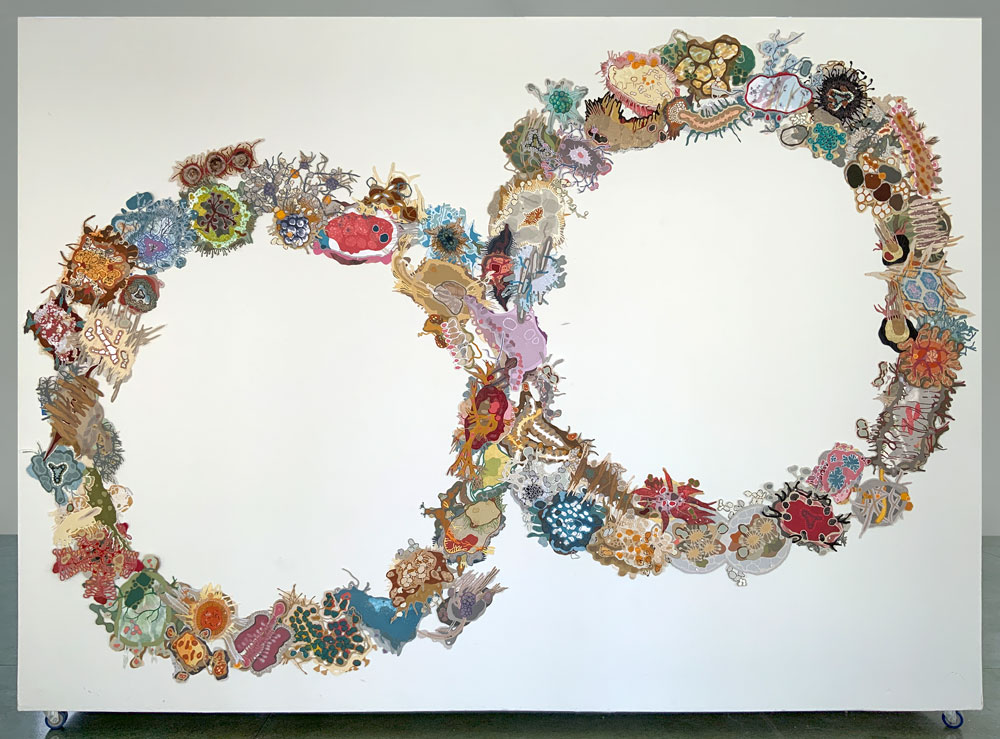
8.75′ high x 12′ wide installation of 61 print collages

Print collage
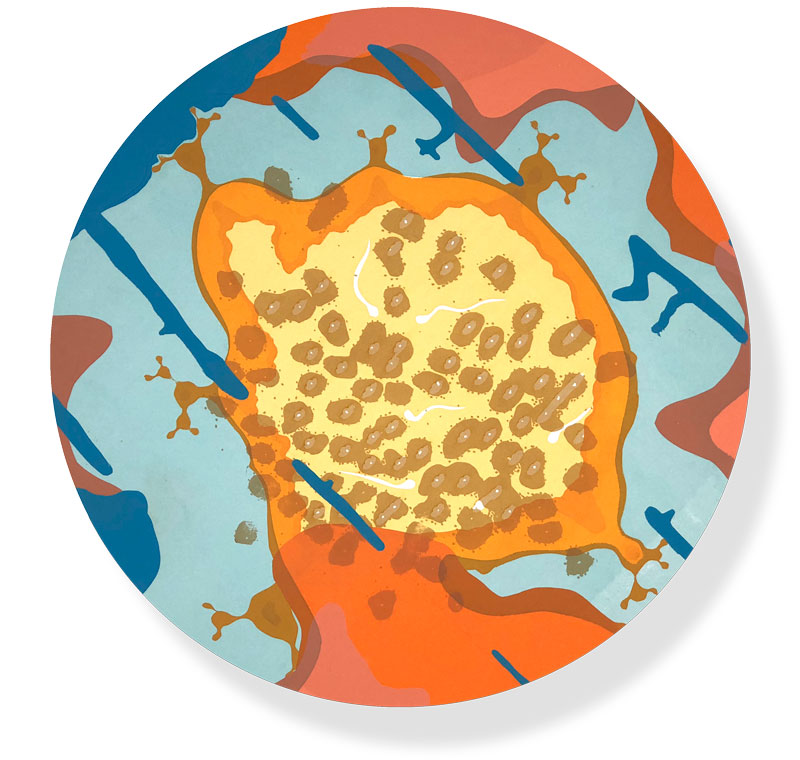
56 screen-based monoprints mounted on 21” aluminum disks
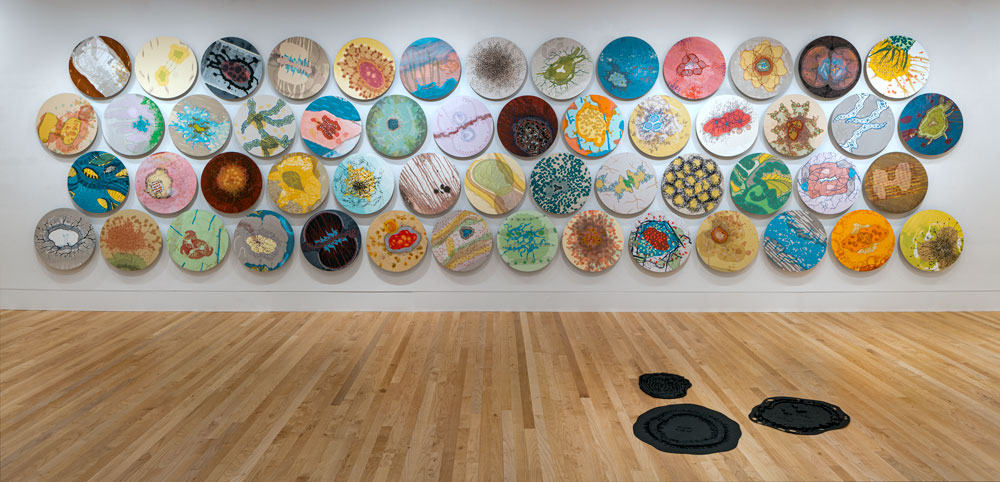
Room size installations of cells
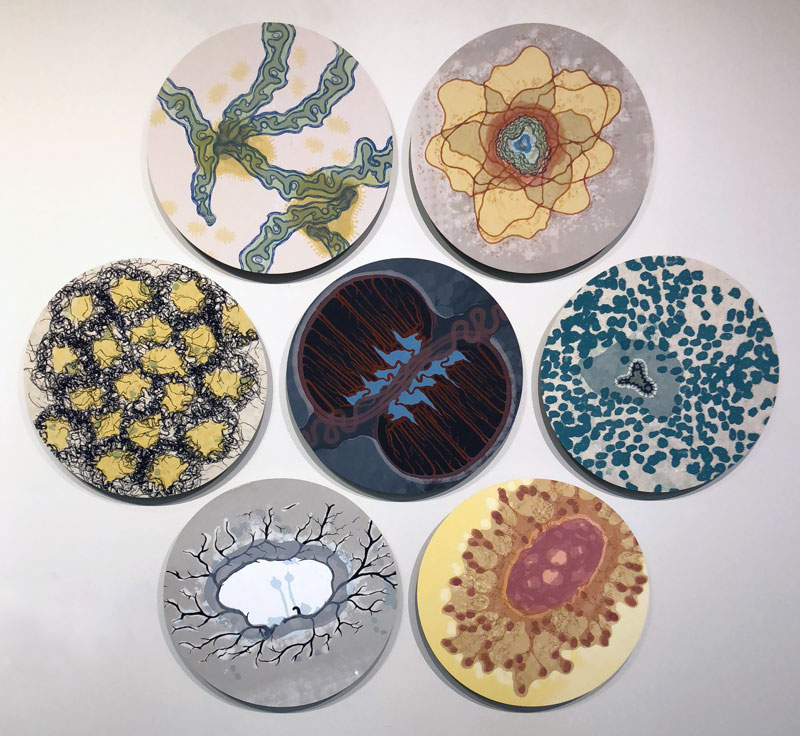
Small installation configurations of cells
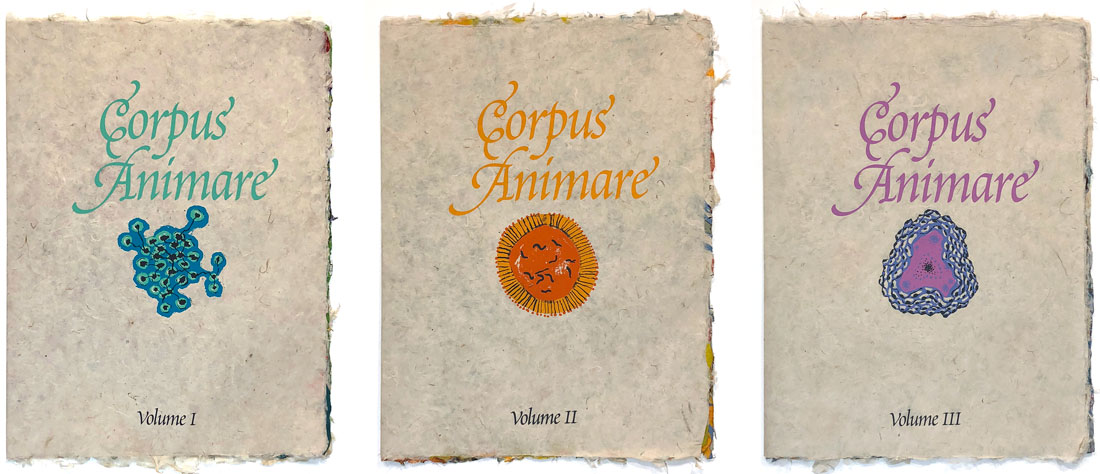
Artists books
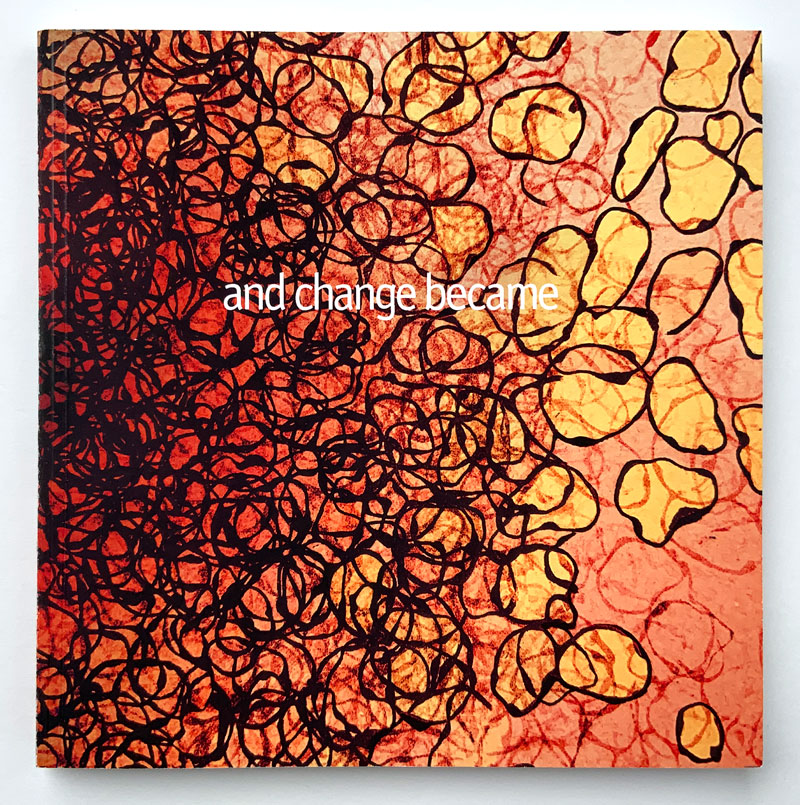
Artist book
Cell Projects: The Backstory
I began inventing imaginary cells in 2016 to distract myself from making socio-political work, the focus of my printmaking for the previous 40 years. This biological focus eased my mind from the all-consuming contentious 2016 Presidential election campaign which was more like a cannibalistic circus then a demonstration of civil democracy. This shift towards beauty and wonder became a conceptual thread in my studio practice.

I created the artist book Between the Burners in 2016 to aid the transition from politically motivated printmaking to more celebratory work. The project’s intention was to get politics out of my head with a single ambitious print focused work. The forty-eight page book pages collages repurposed older prints (back burner issues) with new prints (front burner issues) made specifically for the book. The book exposes the vulnerabilities facing us with each four year election cycle.

At the same time, while traveling abroad, I watercolored cellular inventions to relax and to focus my sketchbook work on celebrating life rather than on the dramas and contradictions of human behavior. Inspired by science writing and an impetus to explore living systems, biological focused projects and installations soon evolved.
Earlier Influences, pre 2016
Earlier projects have influenced Cell Projects, conceptually and technically.

Beginning in 2011, the Nests series employed experimental approaches using screen printing to repetitively print a single pattern into more complex circular structures. This project is significant as the process is a shift towards producing one-of-a-kind hand-pulled prints rather then editioning a numbered set of prints.

In 2014, Eric Kneeland and I screen printed directly on the gallery wall during the opening reception of Wabi Sabi: Impermanence, Imperfection, and the Accidental. The wall composition evolved on-the-spot from screens we brought to the event and from audience suggestions. Eric brought screens with maps on them (daily routines, favorite hikes . . . ) , Kent brought screens with human body parts (organs, cells, vertebrate . . . ). This project contributed to allowing work to evolve without a master plan, embracing the evolution of work through performance, and acceptance of the consequences of experimentation.
Journal Article:
The California Printmaker, Changing Gears, California Society of Printmakers, 2023